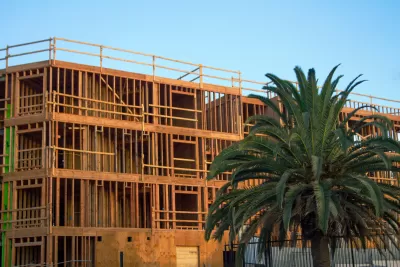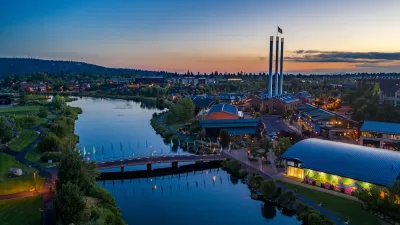It’s been five years since the California Legislature approved Senate Bill 35 to clear hurdles to housing construction. How much of its intentions has the law accomplished, and what should planners look for in the next few years?

The California legislature approved Senate Bill 35 in 2017, with goals to speed up an onerous permitting process and remove traditional obstructions to planning and building multi-family housing projects.
The law is set to sunset in 2026, but a proposed bill, SB 423, would extend and amend the process created by SB 35. Five years, or halfway, into the law’s existing ten-year window, the Terner Center for Housing at the University of California, Berkeley provides an analysis of SB 35’s accomplishments so far. The analysis catalogues and maps 156 projects. Here is how the article explains the findings of the analysis.
Five years in, we find that SB 35 has become the streamlining method of choice among affordable housing developers, who report that the law has made the approval process for new multifamily infill development faster and more certain. Between 2018 and 2021, 156 projects were approved for streamlining or had a pending application, comprising over 18,000 new proposed housing units. Most of these projects are 100 percent affordable developments ( in which all units are designated for households with lower incomes) and most of the projects are located in either the Bay Area or Los Angeles regions.
The source article, linked below, includes an interactive map and an .xlsx file with the list of 156 CB 35 projects. The full report, written by Shazia Manji and Ryan Finnigan, is also available online.
FULL STORY: Findings from the first five years of SB 35

Alabama: Trump Terminates Settlements for Black Communities Harmed By Raw Sewage
Trump deemed the landmark civil rights agreement “illegal DEI and environmental justice policy.”

Study: Maui’s Plan to Convert Vacation Rentals to Long-Term Housing Could Cause Nearly $1 Billion Economic Loss
The plan would reduce visitor accommodation by 25% resulting in 1,900 jobs lost.

Planetizen Federal Action Tracker
A weekly monitor of how Trump’s orders and actions are impacting planners and planning in America.

Wind Energy on the Rise Despite Federal Policy Reversal
The Trump administration is revoking federal support for renewable energy, but demand for new projects continues unabated.

Passengers Flock to Caltrain After Electrification
The new electric trains are running faster and more reliably, leading to strong ridership growth on the Bay Area rail system.

Texas Churches Rally Behind ‘Yes in God’s Back Yard’ Legislation
Religious leaders want the state to reduce zoning regulations to streamline leasing church-owned land to housing developers.
Urban Design for Planners 1: Software Tools
This six-course series explores essential urban design concepts using open source software and equips planners with the tools they need to participate fully in the urban design process.
Planning for Universal Design
Learn the tools for implementing Universal Design in planning regulations.
Caltrans
Smith Gee Studio
Institute for Housing and Urban Development Studies (IHS)
City of Grandview
Harvard GSD Executive Education
Toledo-Lucas County Plan Commissions
Salt Lake City
NYU Wagner Graduate School of Public Service





























